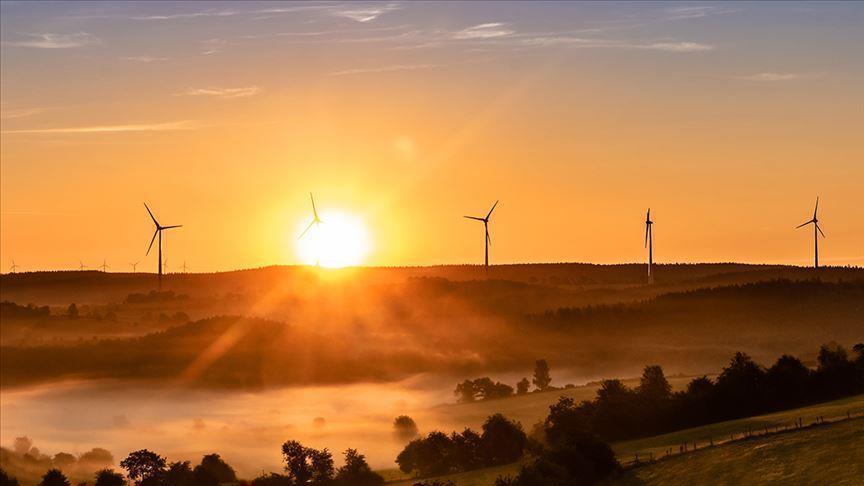Non-fossil fuel energy sources accounted for around 20% of energy consumption in the US last year, according to a statement by the US Energy Information Administration (EIA) on Wednesday.
Total energy consumption in the US totaled 100 quadrillion British thermal units (Btu) in 2019, which was slightly less than the record set in 2018 but was the third-highest level of annual energy consumption in US history.
Several energy sources hit record consumption values in 2019, most of which were non-fossil sources -- nuclear power, solar and wind.
Nuclear energy consumption hit a record high level of 8.5 quadrillion Btu in 2019, according to the EIA.
"Nuclear power plants operated at record levels, 94% of their capacity, which allowed nuclear electricity generation in 2019 to surpass the 2018 level despite the retirement of two plants," the statement said.
The US' total renewable energy consumption reached 11.5 quadrillion Btu in 2019, surpassing coal consumption in the country for the first time in 130 years.
"The largest growth in renewables during the past decade has been solar and wind electricity generation," the EIA said in the statement.
"In 2019, wind energy surpassed hydroelectricity to become the largest source of renewable energy consumption in the US," it added.
The largest growth in renewable energy in the US in the past 10 years has been solar and wind generation, according to the EIA.
- Fossil consumption falls 7% since 2007
On the fossil fuels side, petroleum remains the most-consumed energy source in the US since it surpassed coal in 1950.
Although petroleum consumption remains lower than its peak in 2005, it totaled 36.7 quadrillion Btu in 2019, the EIA said.
Natural gas consumption in the US reached a record high level of 32.1 quadrillion Btu in 2019.
"US natural gas consumption growth has largely been driven by increased use in the electric power sector, which has consumed more natural gas than any other sector in four of the past five years," the statement said.
And, the country’s coal consumption fell by 15% in 2019 to 11.2 quadrillion Btu, marking one of the largest annual declines in consumption of any energy source in the country.
"US coal consumption has fallen by more than half since its peak in 2005; much of this decline has been driven by reduced coal use in the electric power sector," the EIA said in the statement.
Overall, fossil fuel consumption in the US peaked at 86 quadrillion Btu in 2007, but it has since fallen to 80 quadrillion Btu in 2019, marking a 7% decline, according to the EIA.
By Ovunc Kutlu
Anadolu Agency
energy@aa.com.tr


